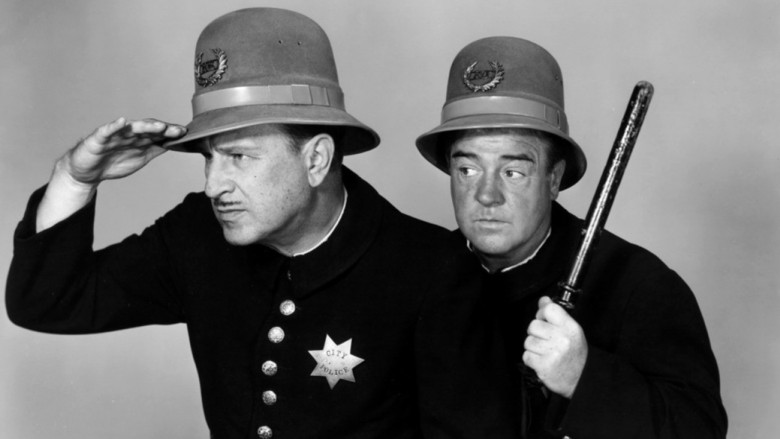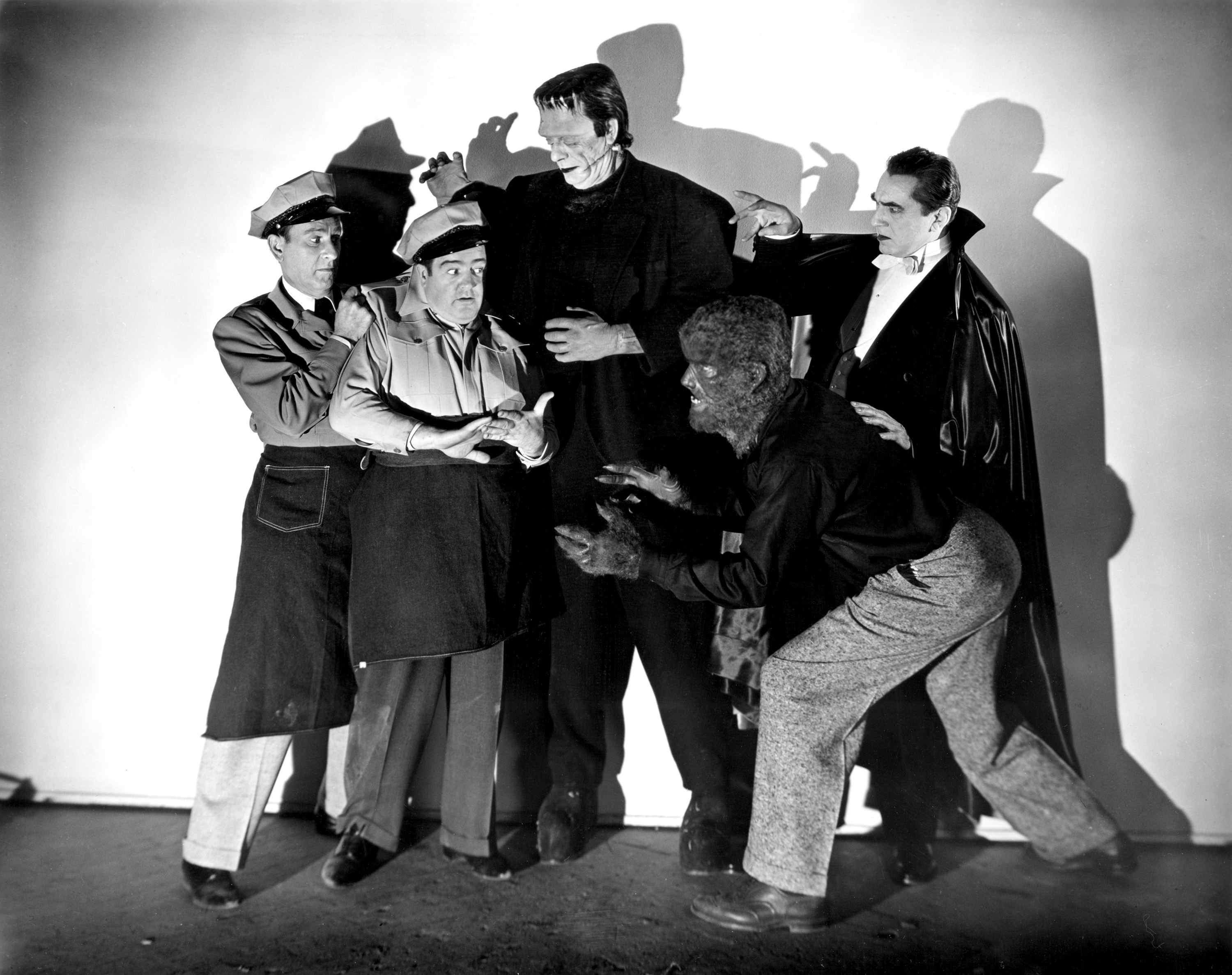Bud Abbott and Lou Costello have made generations of families laugh so hard that their bellies hurt, from the 40’s all the way through syndicated shows airing through the 1980’s. Later generations may not know who these heroes of black and white slap-stick may be, but here is recap of why Abbott and Costello should be in your comedy Hall of Fame.
Bud Abbott (mustache) came from a show business family and grew up working at Coney Island where he eventually ran his own burlesque touring troops. In comedy, there is nothing better than “the straight man” a term for an actor who plays his part with dry humor, seemingly not trying to be funny. He’s the set-up guy. Abbott first worked as a straight man with his wife Betty and later with comedy legends like Harry Steppe and Harry Evanson. Then he met his partner who would shape themselves into one of the great comedy teams of all-time.
Lou Costello was a popular burlesque comic since 1930. Before that year he tried time and again but failed to break into movie acting and film extra work. He met Bud Costello in 1935 while they were working at the Eltinge Burlesque Theater. As if by fate, Costello’s regular acting partner became sick and couldn’t make the show so Abbott stepped in and the two became instant friends and that first performance would lay the groundwork for their 30 partnership.
Soon the pair started to put together a whole show of their own and the duo refined and reworked numerous classic burlesque sketches to fit into their classic and hysterical recipe of Abbott as the sharp straight man, and Costello as the dimwitted laugh-getter.
The pair found fame on radio, TV and film over their storied careers leaving us with classics like, Abbott and Costello Meet the Mummy, Here Come the Coeds and everyone’s favorite, Abbott and Costello Meet the Keystone Kops. Today the old films are in light syndication but can be found on Hulu, Youtube and other online resources like Spotify which houses some of their great audio files from their popular radio programs from the 1940-1950’s.




